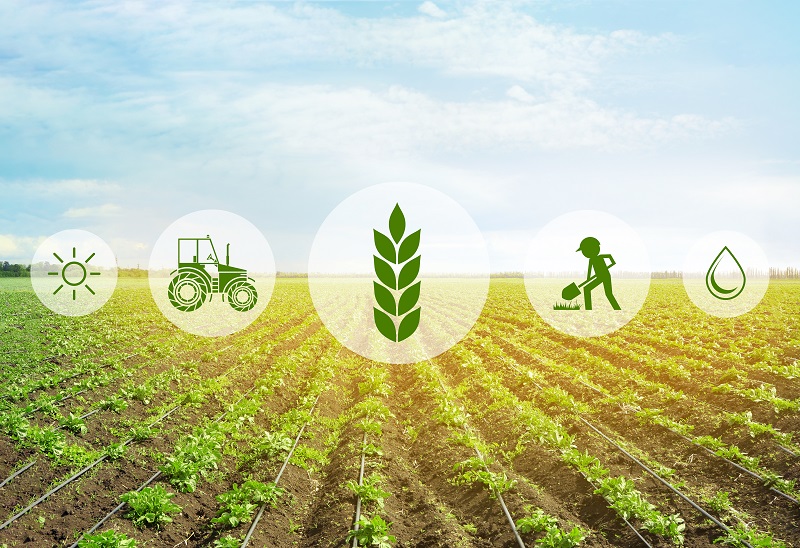Nutrient Stewardship Demands Data Stewardship
This summer, the International Plant Nutrition Institute (IPNI) participated in a symposium on data stewardship, at the Soil and Water Conservation Society’s annual meeting in Madison, WI. The IPNI and its partners are increasingly seeing the need for doing a better job of stewarding the evidence base that supports 4R Nutrient Stewardship. In this article we attempt to point out what you as an agri-retailer might be looking for as you improve the evidence base for your nutrient management recommendations that influence grower decisions.
Becoming more evidence-based is a challenge. If it’s not made a priority, it doesn’t happen. A number of 4R Nutrient Stewardship implementations are discovering this.
In the Western Lake Erie watershed, a certification approach has been implemented. The focus is on ag retailers, providing third-party assurance that the recommendations and custom applications they make are consistent with 4R principles. In practice, this boils down to specific auditable criteria. While it is prescriptive on certain critical practices related to the ecological sensitivity of Lake Erie, in other areas it places the focus on educating and informing growers, leaving room for adaptive management. Not every right practice can be prescribed as a rule.
To the extent possible, 4R implementation focuses on measuring outcomes. At the farm level, profitability and production are key measures, but they can no longer be the only measures. Testing grain or other harvested products for nutrient content provides local, evidence-based estimates of nutrient removal. Comparing nutrient removal to nutrient applications documents nutrient budgets, and soil testing monitors the nutrient status of the soil. These other measures — nutrient removal, nutrient budgets, and soil tests — are now just as important as profitability and production, and many growers have been documenting them.
Don’t Overburden the Grower
It is not practical on a large scale, however, to ask growers and their advisers to measure more expensive and more time-consuming things like the amounts of nutrients moving off the field in runoff. For these estimates, it’s going to be necessary to use credible models that predict how much nitrogen (N) and phosphorus (P) are expected to be lost and how likely it is that those losses will occur. Using these models to test various scenarios can identify management practices that are good candidates for adoption. Testing them with on-farm research can validate whether or not those practices are practical and effective.
We can in some instances simply rule out practices — like applying phosphorus over frozen or snow-covered soil — that have well documented risks to water quality. But the impacts of other practices are not so broadly applicable and may depend on multiple local factors such as soil and landscape characteristics that are too detailed to spell out in any form of regulation or rule.
For example, on the fine-textured flat soils that dominate the Western Lake Erie watershed, a broadcast application of P without incorporation poses considerable risk of loss in the dissolved form. But increasing tillage to incorporate P on sloping landscapes can increase soil erosion and increase the loss of P in the particulate form. Here we need research to calibrate models that will help quantify the impact of “right place” choices.
Recently, a subcommittee of the 4R certification program was asked to determine how much fall-applied nitrogen the program’s 4R criteria should allow. This question arose mainly because a substantial percentage of ammoniated P fertilizers are applied in the fall. The subcommittee examined the evidence, but it was sparse and limited in scope. Rather than provide a specific limit, the members agreed to recommend that when any N was applied in the fall, education in the form of a discussion with the grower needed to take place — to talk about the risk, amount, and fate of nutrient losses associated with such applications. Flexibility was needed because there is no one solution.
The 4R certification approach is being extended into the province of Ontario in Canada as well. The province is part of the Great Lakes Water Quality Agreement and thus it is good to see similar approaches being applied towards achieving the same goal of reducing phosphorus loads from land to Lake Erie by 40%. Efforts in all areas, whether implemented as third-party certification or as other types of programs, will need to report their achievements. Work toward improving the credibility of runoff models, supported by the industry’s 4R Research Fund, will be essential to the industry’s ability to report impact on loading reductions.
Other Spotlights
Several other events this summer highlighted the demand for data for evidence-based decisions. InfoAg 2017 was a great success. It drew 1,400 attendees to St. Louis, MO. The event, started by IPNI more than 20 years ago, brings together experts from all sectors of agriculture. Dr. Steve Phillips, IPNI Director and Conference Chair, organizes the scientific agenda for the conference. Asked what attracts attendees, Phillips said: “When they find out there is credible science here and practical take home information it makes me proud that we host the event each year.”
 The 4R Summit held in Minneapolis, MN, saw record attendance. Many organizations outside the fertilizer industry are embracing 4R. These partnerships and collaborations are using 4R for what it was designed for: Communication to a wider audience.
The 4R Summit held in Minneapolis, MN, saw record attendance. Many organizations outside the fertilizer industry are embracing 4R. These partnerships and collaborations are using 4R for what it was designed for: Communication to a wider audience.
The Soil Health Institute held its second annual meeting this summer in St. Louis. Soil health has become almost a goal in itself, and if we consider its definition — along the lines of “the capacity of soil to sustain plants, animals and humans” — it starts to resemble sustainability for soil management in the same way that 4R represents sustainability for the management of crop nutrition. An evidence-based approach to the 4Rs will support an evidence-based approach to soil health.
So what does this all mean for an ag retailer? For many years “good recordkeeping” has been emphasized. Perhaps now we can get more specific on what it entails. You are likely stewarding a lot of customer data. You may or may not know a lot about their operations, their soils, their crop performance — and the specific combinations of source-rate-time-place they are using to apply nutrients. This data, aggregated, has value both to your customers and to the industry’s public image. To your customers, because these data can help you discern which practices work and which don’t, and improve the quality of your recommen-dations, advice, and custom applications. To our industry’s public image, by supporting industry efforts to report metrics reflecting adoption and adaptation of 4R practices and their impacts on things that matter to our ultimate customers, the people of this planet.







